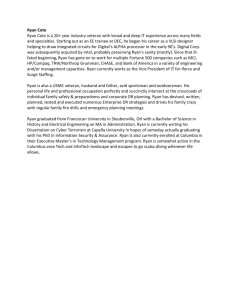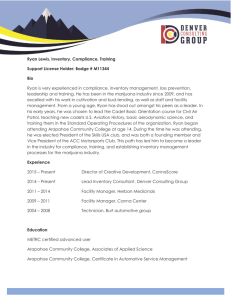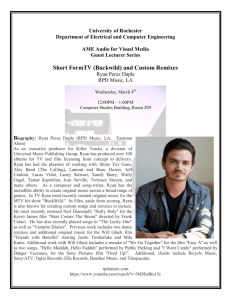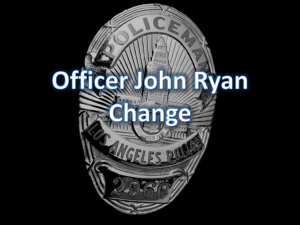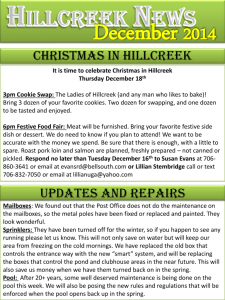Recording 34
advertisement
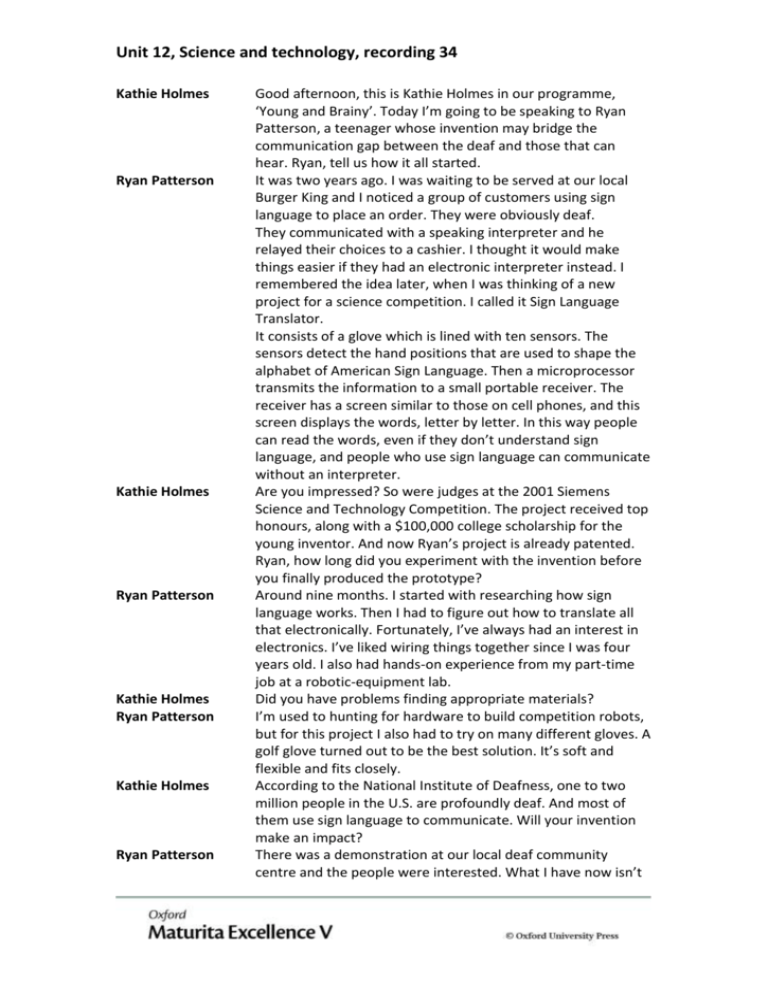
Unit 12, Science and technology, recording 34 Kathie Holmes Ryan Patterson Kathie Holmes Ryan Patterson Kathie Holmes Ryan Patterson Kathie Holmes Ryan Patterson Good afternoon, this is Kathie Holmes in our programme, ‘Young and Brainy’. Today I’m going to be speaking to Ryan Patterson, a teenager whose invention may bridge the communication gap between the deaf and those that can hear. Ryan, tell us how it all started. It was two years ago. I was waiting to be served at our local Burger King and I noticed a group of customers using sign language to place an order. They were obviously deaf. They communicated with a speaking interpreter and he relayed their choices to a cashier. I thought it would make things easier if they had an electronic interpreter instead. I remembered the idea later, when I was thinking of a new project for a science competition. I called it Sign Language Translator. It consists of a glove which is lined with ten sensors. The sensors detect the hand positions that are used to shape the alphabet of American Sign Language. Then a microprocessor transmits the information to a small portable receiver. The receiver has a screen similar to those on cell phones, and this screen displays the words, letter by letter. In this way people can read the words, even if they don’t understand sign language, and people who use sign language can communicate without an interpreter. Are you impressed? So were judges at the 2001 Siemens Science and Technology Competition. The project received top honours, along with a $100,000 college scholarship for the young inventor. And now Ryan’s project is already patented. Ryan, how long did you experiment with the invention before you finally produced the prototype? Around nine months. I started with researching how sign language works. Then I had to figure out how to translate all that electronically. Fortunately, I’ve always had an interest in electronics. I’ve liked wiring things together since I was four years old. I also had hands-on experience from my part-time job at a robotic-equipment lab. Did you have problems finding appropriate materials? I’m used to hunting for hardware to build competition robots, but for this project I also had to try on many different gloves. A golf glove turned out to be the best solution. It’s soft and flexible and fits closely. According to the National Institute of Deafness, one to two million people in the U.S. are profoundly deaf. And most of them use sign language to communicate. Will your invention make an impact? There was a demonstration at our local deaf community centre and the people were interested. What I have now isn’t Unit 12, Science and technology, recording 34 ready for production. I’m sure it’ll be very different by the time it’s actually manufactured. But I do hope to see it on the market one day.

